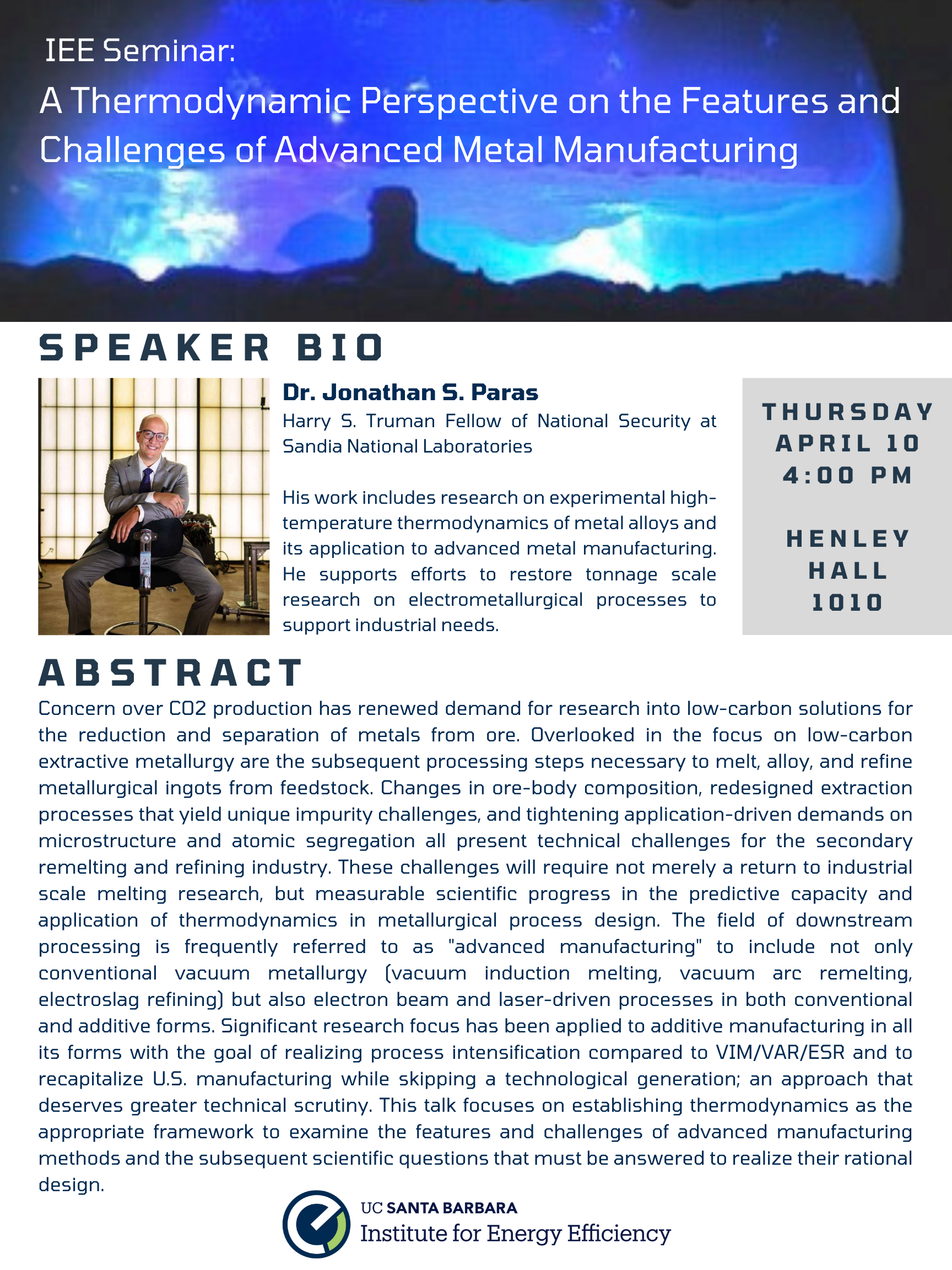
Abstract
Concern over CO2 production has renewed demand for research into low-carbon solutions for the reduction and separation of metals from ore. Overlooked in the focus on low-carbon extractive metallurgy are the subsequent processing steps necessary to melt, alloy, and refine metallurgical ingots from feedstock. Changes in ore-body composition, redesigned extraction processes that yield unique impurity challenges, and tightening application-driven demands on microstructure and atomic segregation all present technical challenges for the secondary remelting and refining industry. These challenges will require not merely a return to industrial scale melting research, but measurable scientific progress in the predictive capacity and application of thermodynamics in metallurgical process design. The field of downstream processing is frequently referred to as "advanced manufacturing" to include not only conventional vacuum metallurgy (vacuum induction melting, vacuum arc remelting, electroslag refining) but also electron beam and laser-driven processes in both conventional and additive forms. Significant research focus has been applied to additive manufacturing in all its forms with the goal of realizing process intensification compared to VIM/VAR/ESR and to recapitalize U.S. manufacturing while skipping a technological generation; an approach that deserves greater technical scrutiny. This talk focuses on establishing thermodynamics as the appropriate framework to examine the features and challenges of advanced manufacturing methods and the subsequent scientific questions that must be answered to realize their rational design.
Biography
Dr. Jonathan S. Paras is the Harry S. Truman Fellow of National Security at Sandia National Laboratories. His work includes research on experimental high-temperature thermodynamics of metal alloys and its application to advanced metal manufacturing. He supports efforts to restore tonnage scale research on electrometallurgical processes to support industrial needs.